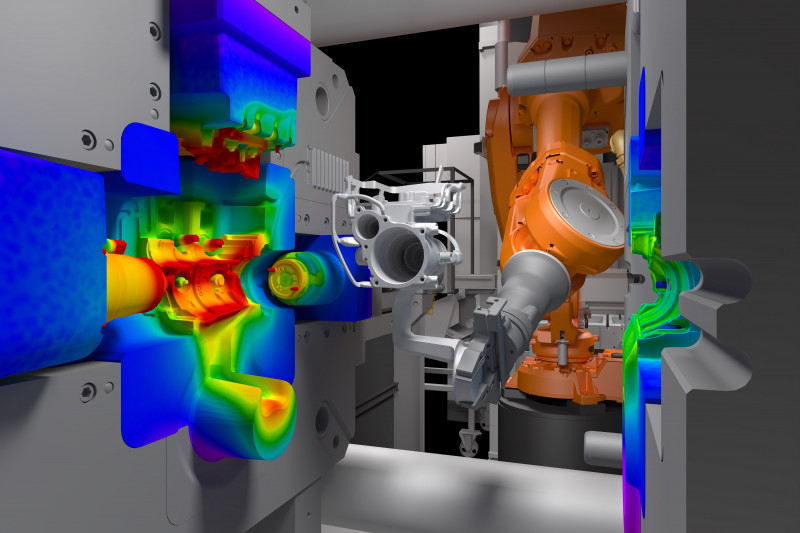Die casting is a widely used manufacturing process for producing complex metal parts with high accuracy and efficiency. However, achieving optimal results in die casting requires careful consideration of design guidelines. By following these guidelines, manufacturers can enhance efficiency and quality throughout the die casting process.
First and foremost, it is essential to choose the appropriate die casting alloy for the desired application. Different alloys have varying characteristics, such as ductility, strength, and heat resistance. Understanding the specific requirements of the part and selecting the suitable alloy can ensure the final product meets the desired performance criteria. Additionally, selecting the right alloy can optimize the casting process, reducing defects and improving efficiency.
The design of the die itself plays a crucial role in die casting. Proper design ensures that molten metal flows smoothly into the die cavity, minimizing the risk of defects such as porosity and cold shuts. The die should be properly vented to allow the escape of trapped gases during the casting process. Additionally, the die walls should have good thermal conductivity to facilitate efficient cooling and solidification of the cast part. By considering these design elements, manufacturers can reduce the occurrence of defects and improve the overall quality of the cast parts.
Gate design is another important aspect of die casting. The gate is the entry point for the molten metal into the die cavity. A well-designed gate ensures proper filling of the cavity while minimizing turbulence and air entrapment. The gate size, shape, and location should be carefully determined to achieve optimal flow characteristics. Improper gate design can result in defects such as flow lines, air pockets, and shrinkage. By optimizing gate design, manufacturers can enhance the efficiency of the die casting process and improve the quality of the final product.
Wall thickness is a critical consideration in die casting design. Parts with uniform wall thickness are easier to manufacture and less prone to defects. Uneven wall thickness can lead to issues like porosity, shrinkage, and warping. Designers should aim for uniform wall thickness wherever possible and avoid abrupt changes in thickness. Additionally, thin sections should be adequately supported to prevent distortion during casting. By ensuring proper wall thickness, manufacturers can enhance both the efficiency and quality of the die casting process.
The use of fillets and radii in die casting design can significantly improve the strength and quality of the final part. Sharp corners and edges can create stress concentration points, leading to premature failure. By incorporating fillets and radii in the design, stress concentrations can be minimized, improving part strength and reducing the risk of cracking or breaking. Moreover, fillets and radii can facilitate the flow of molten metal during casting, reducing turbulence and improving fill characteristics. A well-designed part with appropriate fillets and radii can enhance both the efficiency and quality of the die casting process.

Proper placement of ejector pins is essential for successful die casting. Ejector pins are used to remove the cast part from the die after solidification. Their placement should be carefully determined to avoid interference with the part geometry and minimize the risk of damage. Improper ejector pin placement can result in scratches, dents, or deformations on the part surface. By considering the part geometry and selecting suitable ejector pin locations, manufacturers can ensure smooth ejection of the parts and maintain the desired surface finish.
A dhering to die casting design guidelines is crucial for enhancing efficiency and quality in manufacturing. By selecting the appropriate alloy, optimizing die design, considering gate design, ensuring uniform wall thickness, incorporating fillets and radii, and properly placing ejector pins, manufacturers can minimize defects, improve part quality, and streamline the die casting process. By following these guidelines, manufacturers can achieve optimal results and deliver high-quality die cast parts to meet the demands of various industries.
-

- Thixomolding Teile & Komponenten Handy Mittelplatine verarbeitet
-

- Magnesiumdruckgussteile Laptopgehäusedeckel D
-

- Thixomolding-Druckguss-UAV-Teile aus Magnesiumlegierung
-

- 2022 Großhandel Heißer Verkauf Fahrradteile Magnesiumlegierung Kinder Fahrrad Kein Pedal Balance Fahrrad Kinder Mehrere Farben erhältlich
-

- Magnesium-Gießereiteile Lenksäule
-

- Verteilergetriebe für Autoteile aus Druckguss aus Magnesiumlegierung

 0086-750-5616188
0086-750-5616188 +86 13392089688
+86 13392089688 sales@zhongmei-tech.com
sales@zhongmei-tech.com







